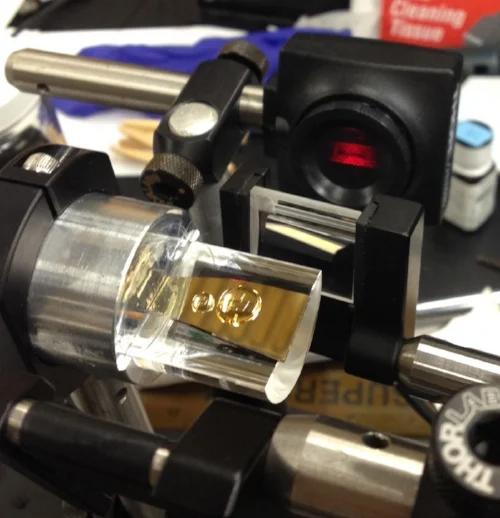Self-Assembly Kinetics using SPR
Surface plasmon resonance (SPR) is a popular label-free technique used to measure chemical binding, including kinetics and binding affinity. Surface binding causes a change in the local electronic environment, which affects the properties of nearby surface electrons (plasmons) and can be measured optically in real-time. SPR is ideally suited for studying surface reactions, for it is most sensitive to changes within 200 nm of the surface.
Using a lab built Kretschmann-style SPR instrument, we are investigating the model of N-heterocyclic carbenes binding to gold surfaces. An alternative to thiol functionalization, N-heterocyclic carbenes (NHCs) have the added benefit of resilience
against harsh conditions when bound to a gold surface [1]. However, their self-assembly on gold is not fully understood.
Kinetic studies of this nature help us understand the lifetime, useful conditions and limitations of NHC-based (bio)sensors.
[1] Crudden, C. et al. Nature Chemistry 2014, 6, 409.



